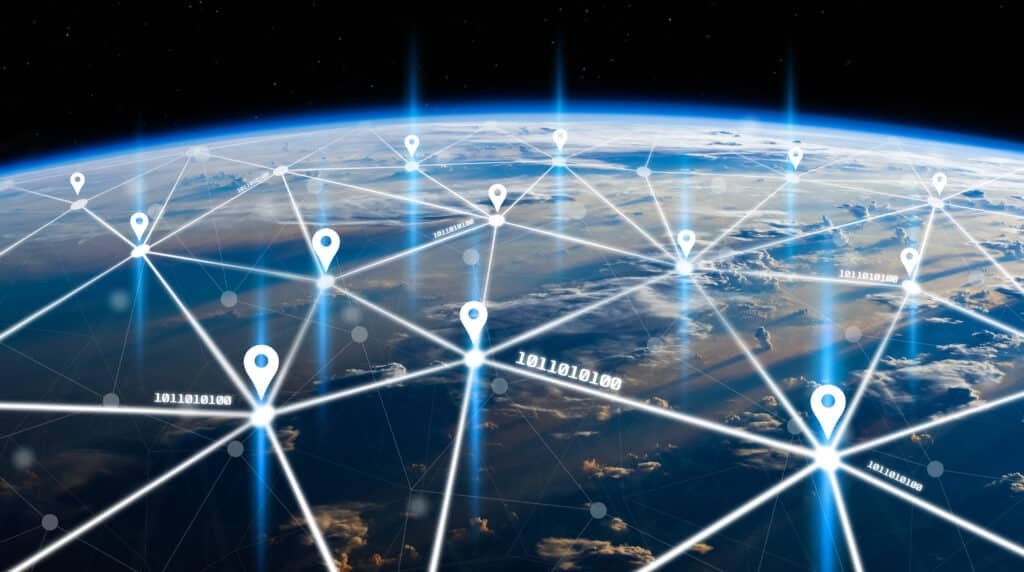Introduction
In the digital age, connectivity is paramount. Fast and secure networks are essential for sharing data, accessing services, and communication among governments, businesses, and citizens. But how can we remain connected as a single digital umbrella of whole states? The solution is State Wide Area Network (SWAN).
SWAN is now among the most pressing issues in technology and e-governance, as it is at the core of Digital India. In this article, we will discuss what SWAN is, how it works, its goals, its advantages, and how it has transformed governance in India.

What is State Wide Area Network (SWAN)?
- The State Wide Area Network (SWAN) is a state-approved project that will interlink government headquarters in the state, district headquarters, and block-level offices with a dedicated and high-speed communication network.
- SWAN is a type of internet highway for government services that facilitates the easy transfer of information and communication between various governmental offices within a state and also between offices within the state itself.
- SWANs are constructed in three-tier formations.
- State Headquarters (SHQ) -The centre of communication.
- District Headquarters (DHQ) -The intermediate between districts.
- Block Headquarters (BHQ) -The end-mile delivery to villages and citizens.
Why Was SWAN Introduced?
Before the introduction of SWAN, most government offices were functioning in silos with sluggish communication and manual processes. In some cases, citizens were even compelled to walk to multiple offices to have access to basic services.
In 2005, the Government of India, as part of the National e-Governance Plan (NeGP), developed the SWAN scheme. Its main objective was to:
• Extend credible voice, data, and video links.
• Empower e-services delivered by citizens, such as online certificates, payment of tax, land records, and health schemes.
• Enhance accountability, efficiency, and transparency in governance.

How Does a State-Wide Area Network Work?
SWAN operation may be analyzed in three layers:
1. Core Layer (State Headquarters) – Here, there are servers, applications, and databases.
2. Distribution Layer (District Headquarters) – Links SHQ and districts either by leased lines or fiber optics.
3. Access Layer (Blocks & Villages) – Offers final mile provision of connectivity to rural offices and Common Service Centers (CSCs).
SWAN permits through this structure:
1. Video meetings between authorities.
2. Safe exchange of data with the government programs.
3. E-governance software and digital signature.
4. Practical redressal in real-time to citizens.
Benefits of a Wide Area Network

The adoption of SWAN has had transformational impacts both on governments and people:
1. Citizen-Centric Services
It has enabled people to access services such as birth certificates, ration cards, and pensions without having to leave their offices multiple times.
2. Improved Governance
SWAN will minimize corruption through the development of transparent systems, where records are computerized and can be easily monitored and accessed.
3. Faster Decision-Making
Even distant districts are in touch with the state capital with instant communication through video conferencing.
4. Cost Savings
Eliminates manual work, travel expenses, and paperwork through facilitation of digital workflows.
5. Digital Inclusion
Introduces Internet and e-services to rural India, closing the digital divide.
Real-Life Examples of SWAN in Action
Andhra Pradesh SWAN (APSWAN) has facilitated the provision of over 100 services to citizens through the Internet.
Madhya Pradesh SWAN (MPSWAN) is an entity that promotes the e-district projects and online revenue services.
Tamil Nadu SWAN TNSWAN links over 7,000 government offices.
All these illustrate how SWAN is empowering e-governance and helping India become a digitally empowered nation.
Challenges of SWAN
Although SWAN is an effective program, it has specific problems:
1. Network infrastructure is expensive to maintain.
2. Depression on leased lines and private telecommunication operators.
3. Connection problems in the remotest places where there is no fiber or 4 G.
4. Cybersecurity is necessary to avert a breach of data.
Future of SWAN in India
The importance of SWAN is going to continue increasing with the popularity of 5G, cloud computing, and AI. It will integrate with:
• High-speed Internet: National Optical Fiber Network (NOFN).
About 600 villages: Common Service Centres (CSCs) of rural digital services.
• Smart urban areas and e-healthcare development of superior citizen services.
SWAN will also serve as the foundation of digital governance in the future, and India will indeed become a networked knowledge economy.
Frequently Asked Questions (FAQs)
Q1: What is SWAN’s complete form?
Ans:The acronym for State Wide Area Network is SWAN.
Q2: In India, who introduced SWAN?
Ans:In 2005, the Indian government introduced SWAN as part of the National e-Government Plan (NeGP).
Q3: What are the advantages of SWAN for citizens?
Ans:The answer is that it enables citizens to access government services online swiftly and transparently.
Q4: Does every state have access to SWAN?
Ans:Indeed, practically every Indian state and union territory has put its own SWAN schemes into action.
Conclusion:
The State Wide Area Network (SWAN) is not merely an undertaking in technology, but an Indian vision of a digitally empowered India. SWAN links states, districts, and villages, which guarantees governance is accessible to all citizens in an efficient, open, and inclusive manner.
With the emerging trends of Digital India and the implementation of 5G in India, SWAN will continue to be a key backbone in e-governance, ensuring the nation ranks higher in global digital transformation.





